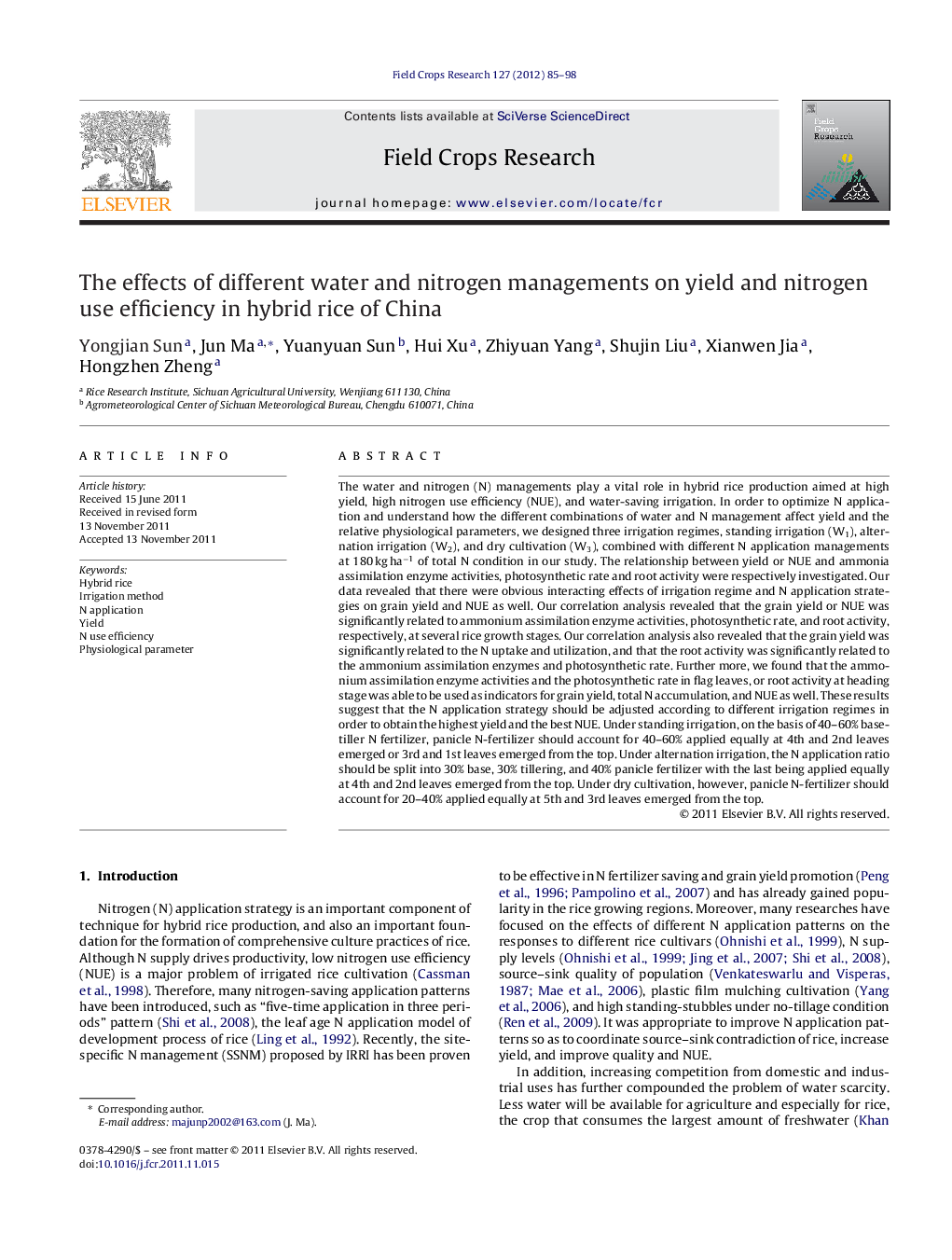| کد مقاله | کد نشریه | سال انتشار | مقاله انگلیسی | نسخه تمام متن |
|---|---|---|---|---|
| 4510702 | 1624736 | 2012 | 14 صفحه PDF | دانلود رایگان |

The water and nitrogen (N) managements play a vital role in hybrid rice production aimed at high yield, high nitrogen use efficiency (NUE), and water-saving irrigation. In order to optimize N application and understand how the different combinations of water and N management affect yield and the relative physiological parameters, we designed three irrigation regimes, standing irrigation (W1), alternation irrigation (W2), and dry cultivation (W3), combined with different N application managements at 180 kg ha−1 of total N condition in our study. The relationship between yield or NUE and ammonia assimilation enzyme activities, photosynthetic rate and root activity were respectively investigated. Our data revealed that there were obvious interacting effects of irrigation regime and N application strategies on grain yield and NUE as well. Our correlation analysis revealed that the grain yield or NUE was significantly related to ammonium assimilation enzyme activities, photosynthetic rate, and root activity, respectively, at several rice growth stages. Our correlation analysis also revealed that the grain yield was significantly related to the N uptake and utilization, and that the root activity was significantly related to the ammonium assimilation enzymes and photosynthetic rate. Further more, we found that the ammonium assimilation enzyme activities and the photosynthetic rate in flag leaves, or root activity at heading stage was able to be used as indicators for grain yield, total N accumulation, and NUE as well. These results suggest that the N application strategy should be adjusted according to different irrigation regimes in order to obtain the highest yield and the best NUE. Under standing irrigation, on the basis of 40–60% base-tiller N fertilizer, panicle N-fertilizer should account for 40–60% applied equally at 4th and 2nd leaves emerged or 3rd and 1st leaves emerged from the top. Under alternation irrigation, the N application ratio should be split into 30% base, 30% tillering, and 40% panicle fertilizer with the last being applied equally at 4th and 2nd leaves emerged from the top. Under dry cultivation, however, panicle N-fertilizer should account for 20–40% applied equally at 5th and 3rd leaves emerged from the top.
► Irrigation treatments and N application strategies had significant interaction effects for grain yield and NUE.
► The activities of GS, GOGAT, and photosynthetic rate in flag leaf and root activity at heading stage can be indicators for grain yield and NUE.
► Root activity had significant positive correlation with ammonium assimilation enzymes and photosynthetic rate in the growth of rice.
► Maximum grain yield was produced by the optimum ratio of N application and panicle N-fertilizer application under alternation irrigation.
Journal: Field Crops Research - Volume 127, 27 February 2012, Pages 85–98